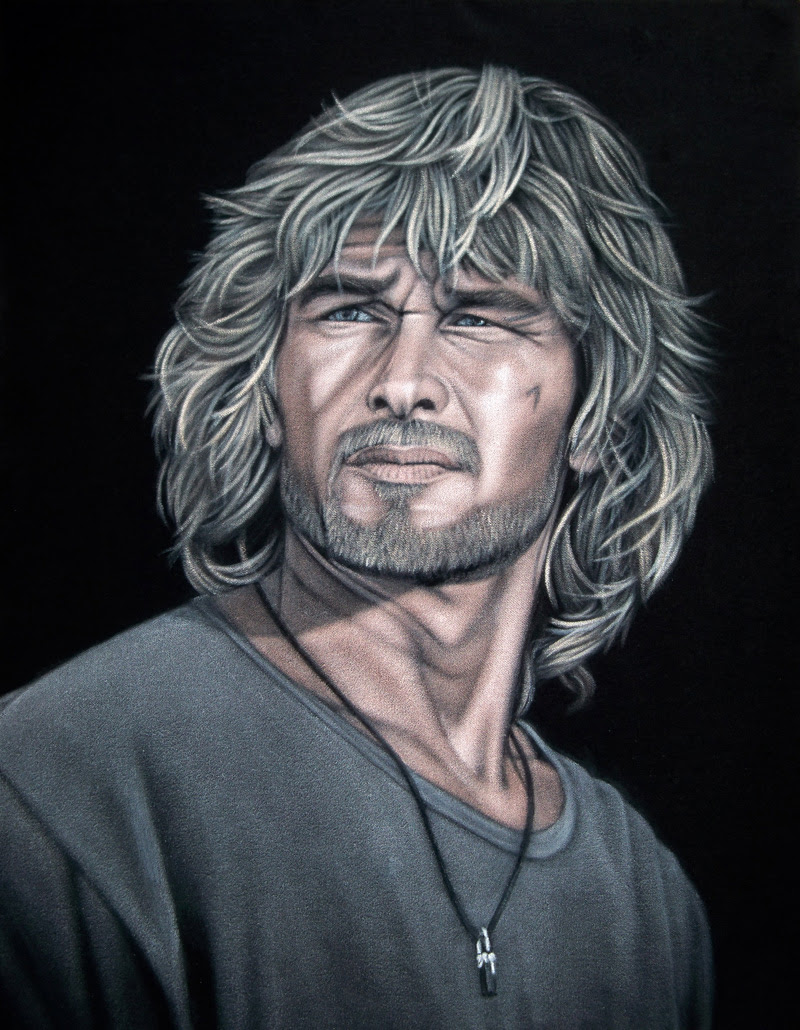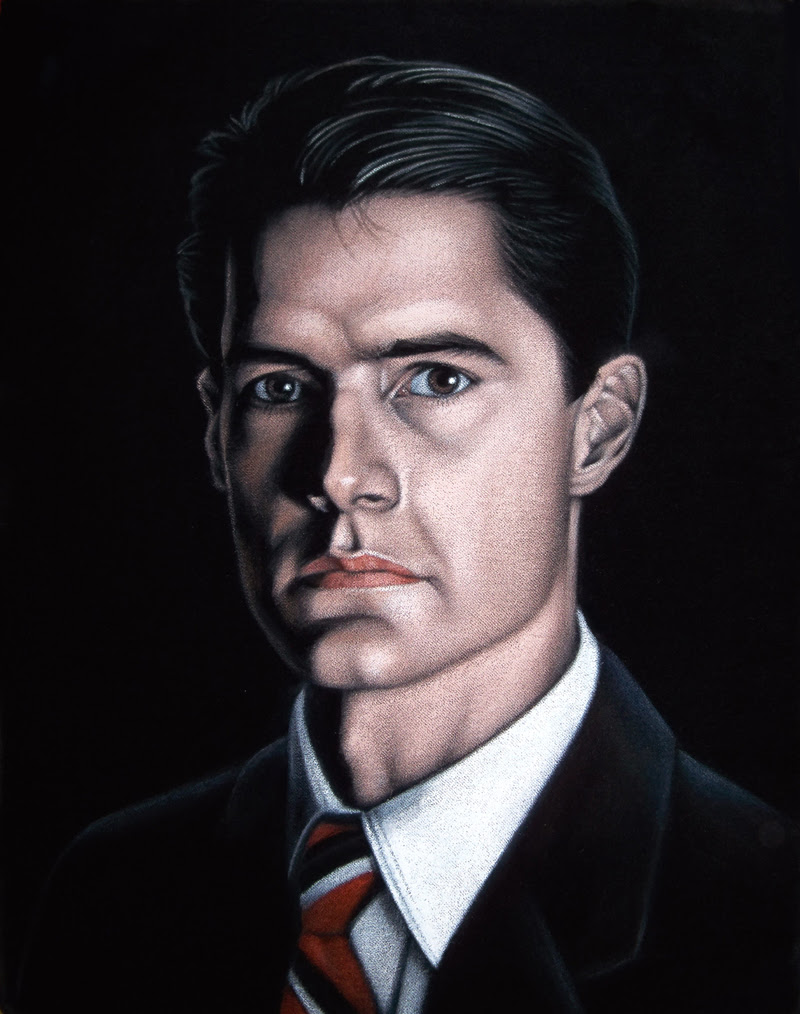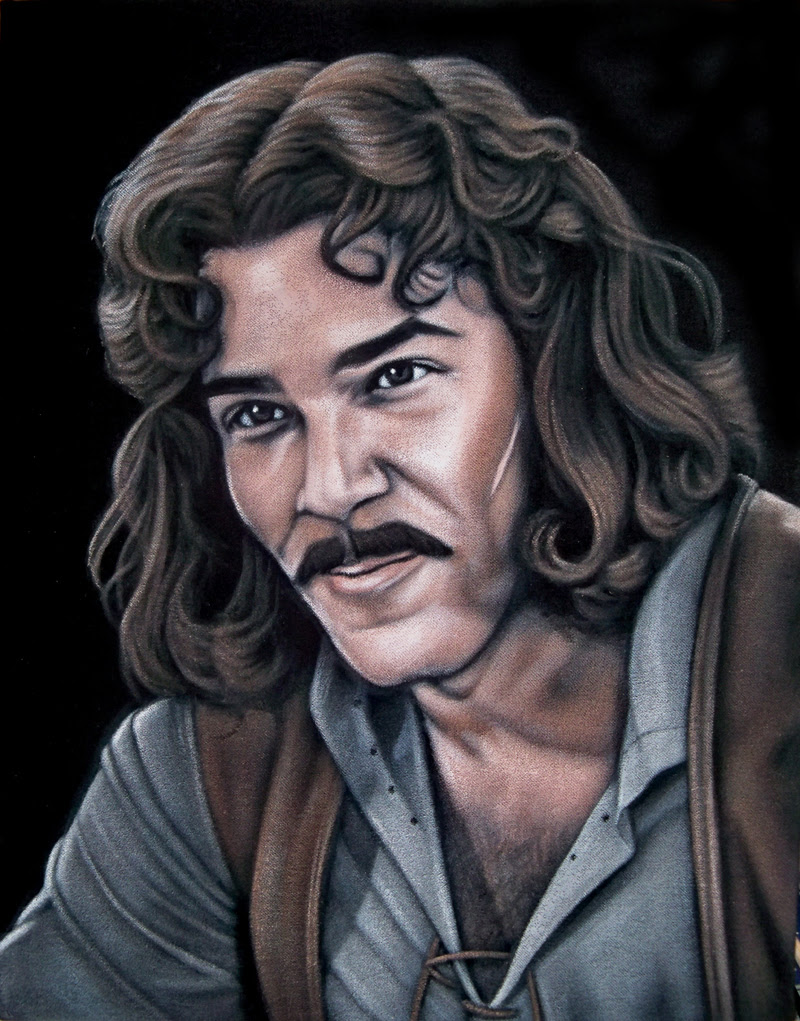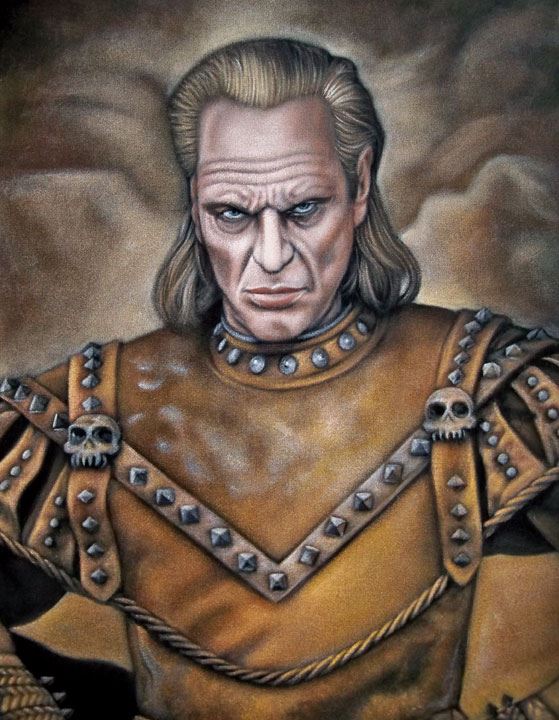Preview: “Cult Of Personality” by Bruce White @ Gallery 1988 [LA]
The North Carolina artist utilizes his patented velvet painting technique to present 30 new brilliant pop-culture related portraits in Los Angeles
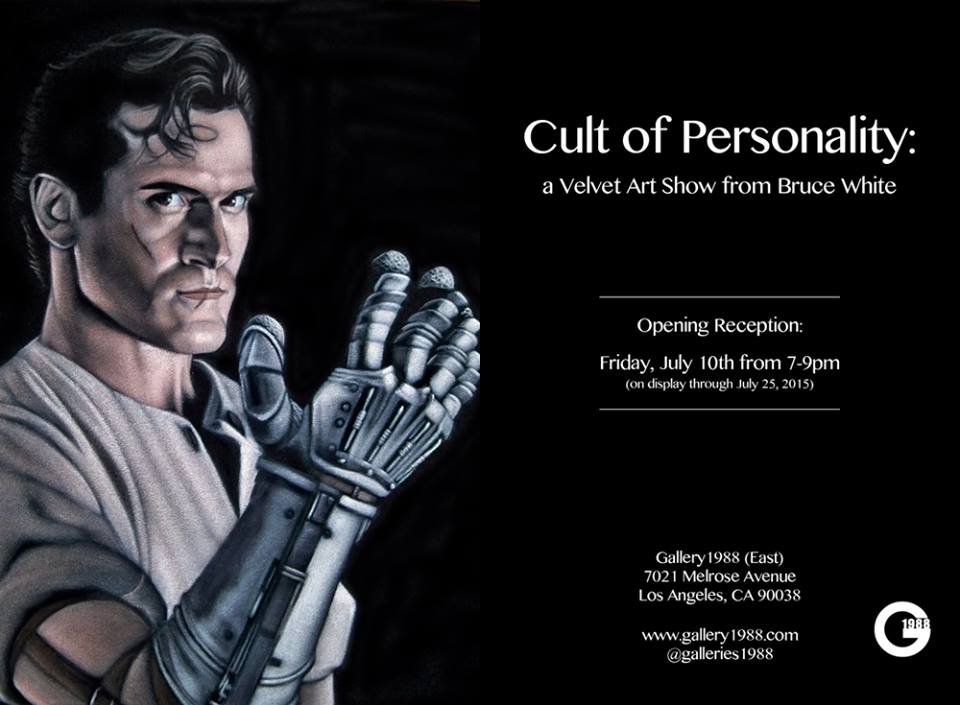
It seems as if there has always been an inherent element of kitsch embedded into the concept of velvet painting, but that isn’t necessarily the case. It’s been documented that Marco Polo initially discovered samples of velvet painting in Kashmir as far back as the 14th century, and even that European monks went on to use the fabric to create paintings of religious imagery, although the art form remained somewhat exclusive to that practice, never spreading beyond the monks, around that time. During the Victorian era, velvet painting actually found favor among the upper class thanks to an Englishman by the name of Francis Town, who claimed to have invented the technique and, with the help of his children, went on to provide classes in the highly specific discipline to the social elite. The association to tacky and low art kitsch is primarily connected to a huge boom in velvet work that began making it’s way across the United States from Mexico around the early 1970s, during a time where black light posters and lava lamps (first invented in the 60s) were quite popular, as the psychedelia of the previous decade was merging into the wild, over-the-top aesthetic of the disco era. The majority of the credit for this growth in visibility and mass distribution can be attributed to a man named Doyle Harden who first stumbled across some velvets while visiting Ciudad Juárez, Mexico in 1964 and, recognizing the potential market, after he displayed them in the grocery stores that he owned and, subsequently, sold them all to inquiring customers, began transporting truckloads of the art across the border to his home in Georgia. A Chicagoan by the name of Leon Korol began purchasing large quantities from Harden to make a similar living by distributing the art up North, becoming a major catalyst for Harden building a production factory in Juárez — with the help of Korol‘s investment — by 1972, to meet that increasing demand. Along with the over saturation of the medium, this modern era of velvet painting was fueled by assembly line workers pushing out product around the clock — various workers, many of which had no previous art background, would tackle one specific element of a painting (waterfalls, sunsets, shrubbery, etc) and pass it on to the next in line. This lack of scarcity in the work and the factory-style mass production clearly fed into the implied lack of artistic value in the art form, but to dismiss the medium’s potential all together, makes just about as much sense as rejecting a film like The Big Lebowski as a modern day classic, simply because it might have been created using similar recording technology as a movie like Ernest Saves Christmasl. So… while the wide dismissal of velvet painting in our culture is definitely understandable, anyone that continues to believe in the limitations, and that it has no place among “real art,” has not likely witnessed the power of velvet master, Bruce White.
A tattoo artist by trade, Bruce White‘s work with skin art has, no doubt, influenced his comprehension of its velvet counterpart, namely in his ability to utilize the background to imply structure, while creating dimension by playing with light, almost as if he is painting what would be the negative image for most artists working with more traditional canvases. The North Carolina artist was drawn to the medium after recognizing its unique potential, most notably in regards to its ability to create contrast. There’s a reason that people have always been so inexplicably drawn to the magic of images on velvet and, under White‘s skillful hand, his brilliant forms exhibit a level of intensity and dimension unlike anything that I’ve witnessed through the medium before. There’s an almost majestic beauty to the way that the paint can glisten when it penetrates the deep black backdrop of a velvet canvas, but it’s far too easy to rely on that effect, allowing it to take on the novelty of one of those fiber optic flower lamps — a novelty that, while intriguing, burns out quickly with little endurance. There’s a naturally compelling aspect to the velvet canvas that fed into the boom in the first place, but to equate it to the appeal of visuals created through CGI, then if most artists that have worked within the medium in the past have relied on pushing the unorthodox nature of the visuals to the forefront, reaching the technical level of the Dire Straits “Money Is For Nothing” video, Bruce has mastered his craft to the point of Jurassic Park, pushing it past that initial appeal and achieving a new level of realism, beyond the gimmick of the flashy format. Any novelty isn’t the endpoint; the medium is merely a tool for him to achieve whatever effect he is shooting for, and it’s a tool that he understands to a remarkable degree.
A huge fan of sci-fi — the world of Star Wars, in particular — such characters often find their way into White‘s work in portrait form. Building a name by consistently creating standout pieces in various, typically pop-culture themed, group exhibits, at various venues, one space that Bruce has truly found a home at is Gallery 1988 in Los Angeles, which has already hosted at least 2 previous solo exhibits of his work; the most recent being last year’s impressive and incredibly satisfying professional wrestling-based, Velvetmania. Tomorrow, Friday, July 10th, 2015, the artist will once again fly from coast to coast to be in attendance for a brand new exhibit of his work at G1988. Titled Cult Of Personality, this latest exhibit is a continuation of his pop-culture portraiture, featuring 30 brand new pieces which, if the preview images are any indication, pay tribute to various classic characters from film and television. Again, by focusing on figures from pop-culture, especially in conjunction with this medium, it provides easy fuel for any potential naysayers to write off what Bruce White creates as pure novelty and reject it as high art, but it’s a much more difficult claim to make if you’ve actually seen the work. What really makes these pieces successful is White‘s uncanny ability to capture the essence of his figures and allow their personalities to jump right through his canvases. What’s even more exciting than seeing new pieces from him is noticing how Bruce is, somehow, actually continuing to get even better at his craft — the new “Beetlejuice” piece might be my favorite of anything that I’ve ever seen him do, and it’s amazing to consider that, without the delicate light stroke of painted light, the eye-patch on his “Snake” Plissken would remain nothing more than a black unpainted section of the background, rather than a 3-dimensional rendering of the iconic accessory. Bruce White has definitely found his medium, and it’s a glorious one.
If you’re in the Los Angeles area tomorrow night, get down to G1988’s East location between 7 -10pm for the opening reception. If you’re not able to swing that, don’t worry; you’ll still have until the 25th of the month to check these things out in person, before the run is over. Don’t miss it.
Check out a selection of preview images for the exhibit below the following event details…
WHAT:
“Cult Of Personality”
a velvet art show from Bruce White
WHEN:
Opening:
Friday, June 10th, 2015
7pm-10pm
WHERE:
Gallery 1988 (East)
7021 Melrose Ave.
Los Angeles, Ca 90038
ADDITIONAL INFO:
Opening is ALL AGES w/NO COVER
Exhibit will be on view until July 25th.
The gallery is open from 11 – 6pm from Wednesday – Sunday.

